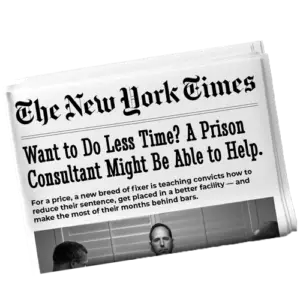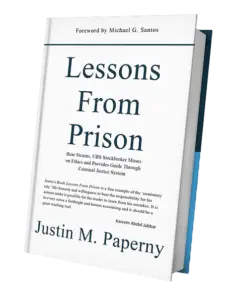Tracii Hutsona didn’t assume credits would be enough. When she was sentenced to 51 months in federal prison—more than her guideline range—she didn’t try to out-argue the sentence. She prepared.
She worked with our team to draft a complete release plan. She documented housing, job opportunities, character reference letters, and her goals for post-release supervision. She brought that plan with her to prison and handed it to her case manager within days of arrival.
She didn’t stop there. She began leading classes, mentoring other women, tracking her First Step Act credits, and journaling what she was learning. She built a public record of progress through Prison Professors Talent.
Her case manager asked her to share that planning process with others inside the camp.
Tracii didn’t just submit a file. She built a track record that made it easier for staff to support her transition home. And when she petitioned for a sentence reduction, the judge granted it—citing the work she had done and documented. She ultimately received 11 months off her sentence and a full year of home confinement and halfway house.
That’s how you benefit from a policy change—not by waiting for the system to recognize you, but by documenting everything that shows why it should.
The BOP’s May 28, 2025 memo gave staff new instructions. Director William Marshall III wrote that home confinement should be prioritized for eligible people who “do not require the structured support of Residential Reentry Centers.”
This directive shifts the burden. If your file shows you don’t need that structure, you should be referred for home confinement. If your file is incomplete, you stay where you are.
Michael Santos spent 26 years in federal prison and wrote about this exact issue in Incentivizing Excellence:
“The sentencing and corrections system fails to offer a mechanism that incentivizes or encourages an individual to atone.” (66 Hastings L.J. 1552)
That’s what we’re trying to change.
Tracii’s file gave her case manager what they needed. She didn’t rely on conversations. She didn’t wait until the last month of her sentence. Her effort wasn’t vague, and it wasn’t stored in her head. It was printed, submitted, and signed.
This is what separates people who benefit from this memo from those who will stay in prison longer than necessary.
I’ve seen people with more than 200 days of time credits get passed over. I’ve spoken with families who thought home confinement would happen automatically—then found out that their loved one never submitted a release plan.
Eligibility won’t move your name forward. Documentation will.
Michael Santos saw this disconnect years before the First Step Act became law. He argued:
“Rather than waiting for calendar pages to turn, we should incentivize people in prison to pursue a path that will lead to their emergence as law-abiding, contributing citizens.” (66 Hastings L.J. 1549)
That’s the principle behind this new directive. But the policy assumes you’ve already done the work. If your name is up for review and your file is empty, your credits won’t be applied. If you haven’t shown where you’ll live, how you’ll support yourself, or what you’ve been doing, staff won’t take the risk.
This is why we built PrisonProfessorsTalent.com. It’s not a resume site. It’s a platform where people can publish a verified track record. That includes letters, class completions, writing samples, progress journals, and anything else that helps a stakeholder see more than a BOP ID number.
Michael wrote:
“The longer we expose people to ‘corrections,’ the less likely those people become to emerge as law-abiding, contributing citizens.” (66 Hastings L.J. 1549)
That’s the outcome this memo is trying to change. But only for people who show they don’t need to be held longer.
Tracii didn’t hope the system would recognize her effort. She created a file that removed the guesswork. She documented her work clearly and early. Her case manager didn’t have to make assumptions. The judge didn’t either.
Ask yourself:
- Would your file support a move to home confinement?
- Have you submitted a plan that includes contact names, housing details, and job offers?
- Have you documented your First Step Act credits and program completions?
The new policy offers an opportunity. But it won’t apply if you haven’t done the work—and documented it.
What is your file saying about you right now?
We’ll show you what people like Tracii included, how her case was evaluated, and how to build your own record that proves you are worthy of leniency.
Justin Paperny



